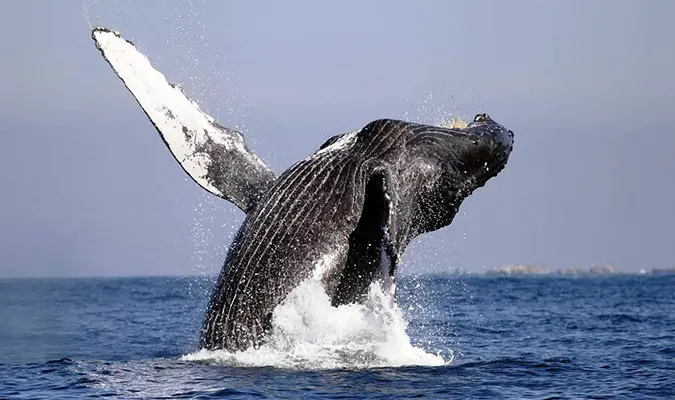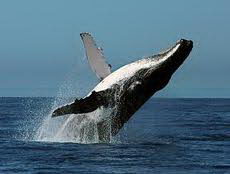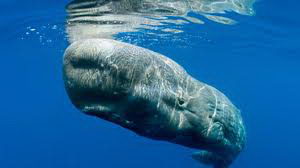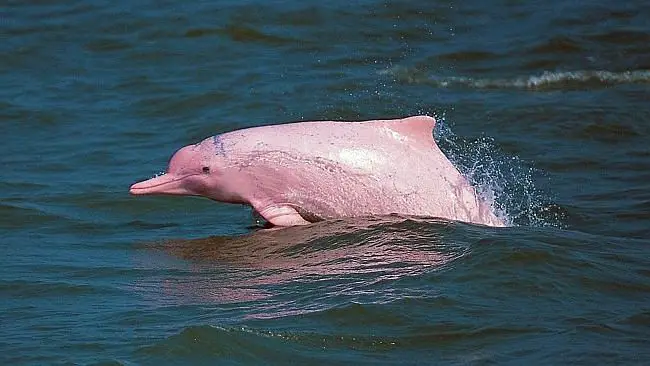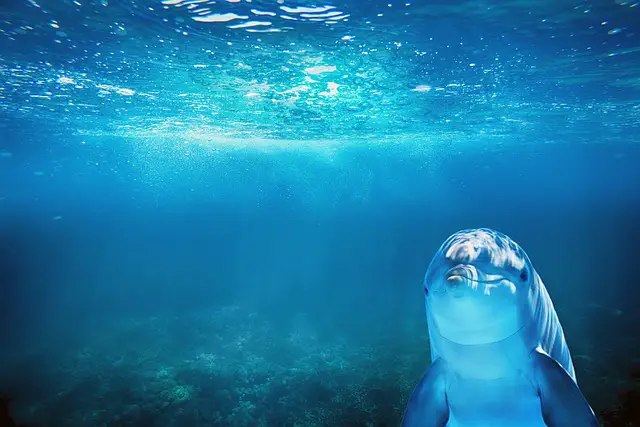The killer whale or orca, is second only to humans as the most widely distributed mammal on the planet earth. Killer whales typically hunt prey underneath the water surface that is why conservationists seldom see them hunting in the wild. Nonetheless, some killer whales are beyond this rule and they are often found hunting as compared to any other species of cetacean. Orcas are important to the ecosystem and are repeatedly involved in dramatic hunting of seals and sea lions of Argentina waters. Do you want to know what do killer whales eat?
Scientists usually find out killer whales diet by examining the whale’s stomach; in the 1800s in Denmark scientists found out remnants of 14 seals and 13 porpoises in the whale’s stomach which concluded that killer whales were bloodthirsty animals. Not only did scientists find these two animals but the stomach also contained contents of other species such as sea turtles, bony fish, sharks, rays, squid, birds, and mammals.
Nonetheless, it has emerged over the last 30 years that, rather than individual whales having a specialized diet, individuals are parted into diverse populations which demonstrate specialization in foraging on particular types of prey, typically either fish or mammals.
What Do Killer Whales Eat | Foraging Specialists
Dr. Michael Bigg was the first one to study the foraging behavior of killer whales while working for the Fisheries Research Board of Canada, in the coastal waters of British Columbia in 1970s. They often found several killer whales ranging from 5 – 50 individuals in the inshore areas where salmon was abundant in the summer days.
Read More: Do Killer Whales Eat Polar Bears?
Groups of killer whales were found traveling in slim channels for weeks or days where salmon were in a large quantity. These whales disperse hundreds of feet, often coursing milling at the surface. Bigg named these whales as ‘Residential Killer Whales’. According to Bigg, killer whales did not chase any other species as regularly as of salmon which they mostly do so individually.
Besides, killer whales were also found hunting in groups especially for smaller porpoises or larger whales and not for salmon. With the incredibly abundant salmon fish, as hundreds of thousands, or even millions of fish migrate towards spawning rivers, seemingly there was no need to cooperate with other killer whales to hunt such an excessive prey. Having said that, killer whales often overlooked seals, sea lions, porpoises or similar marine mammals in areas where salmon was abundant.
Biggs and his associates also observed a small group of killer whales transiting through high-salmon-areas, which the Bigg called them ’transients’. However, this time they found something different from transient killer whales as compared to the resident fish-eating killer whales; the transient killer whales were often involved in hunting Harbor seals but they did not cooperate with the fish-eating whales.
According to Bigg, these whales might have been rejected or separated from other groups just like the African lions become nomadic. The 20-years-later study remark out the truth that these whales were actually marine-mammal foraging specialists, and they are regularly found in the same region like the fish-foraging specialists. The individual killer whales are virtually generalist foragers. While this population is marine-mammal generalists, they do rarely kill other types of prey.
Read more: Do Killer Whales Eat Polar Bears
In the Vancouver Island, Canada, a researcher Pam Stacy belongs to the Marine Mammal Research Group observed three killer whales feeding on an enormous male elephant seal for quite a few hours—the prey was too large to be consumed by only three whales and they could only eat no more than 20% of it. He saw one of the whales began chasing a small seabird after being fed with elephant seal, the seabird was a rhinoceros auklet swimming adjacent to the prey. It explained that the whale must have chased it not out of hunger but for some other reason.
Pam hold that mammal-eating whales are often found chasing or killing birds and others such as guillemots, murres, puffins, cormorants, and grebes. However, whales do not eat these birds. One of the reasons is that in summer the seal is specifically abundant which means whales typically hunt birds in other months and chasing or killing in summer is nothing but a practice. In the Mercury island off the coast of South Africa in 1986, killer whales hunted more than 300 cormorants but only a few they ate.
Read More: Killer Whale Facts for Kids
The population of whales dwelling in the Crozet Archipelago, often killed and ate penguins in the Southern Indian Ocean. They hunt penguins especially when these flightless birds are molting, and thus are unable to fly. Some other species of killer whales in the Norway, Argentina, Faroe islands in the North Atlantic, are also known to kill seabirds.
Foraging-specialist killer whales such as fish-eating and mammal-eating whales also take on prey other than their regular diet. Does this make them exception to the foraging specialist? The population of killer whales living in central California was observed feeding on a sea lion and a great white shark measuring 13 feet (3 – 4 meters) in length; however, these sightings were too rare to be made them a general rule. Killer whales, in general, are not foragers rather they only catch a specific prey.
Read More: Do Polar Bears Eat Orcas?
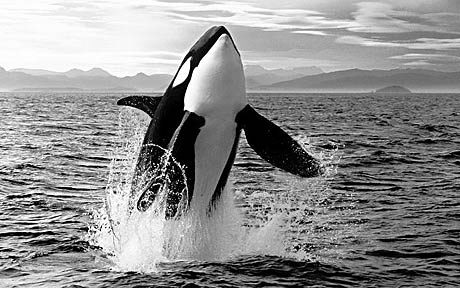
Image Courtesy of The telegraph
Cooperative Hunting | How Do Killer Whales Hunt in Groups
One of the most notable features of killer whale’s foraging behavior is that they often hunt in groups perhaps due to the large quantity of prey in a specific area. The mother does share its prey with her offspring but that is not cooperative hunting. Thanks to the cooperative hunting which allows whales to catch quick-mover species through water such as dolphins, porpoises, sea lions, and gray whales.
Killer whales are faster than any other marine mammal, even more than Dall’s porpoises which are regarded as the fastest swimmers. However, in several cases killer whales gave up the chase in the long run against porpoises since the former swims for its food while the latter swims for its life. This explains why whales catch porpoises while cooperating in groups. The chase of whales for porpoises is often an interesting one as both species are swimming at a speed of 20 miles (30 kilometers) per hour. When killer whales hunt in groups, they disperse few hundred feet so that at least one member of a group catches prey. The large group comprising four to five whales is more likely to catch porpoises. When caught, porpoises are not killed instantly, rather whales just harm them with few bites and let them go but now porpoise will not swim as fast as she could before. Cooperative hunting also plays an important role when feeding on a small schooling prey. The killer whale needs to hunt a large quantity of herring.
(What Do Killer Whales Eat)
Sometimes, however, the prey becomes too dangerous for a whale to capture, such as the case with sea lion specifically the fully-grown Stellar’s sea lions weighing no less than 4400 pounds (2,000 kilograms). These lions are not only fast but they have sharp teeth like that of a grizzly bear and can harm killer whales. Apart from sea lions, stingrays are also potentially dangerous for killer whales.
The whales have to choose between the two things when it comes to prey choice. First, whether the species rank in terms of profitability (easiness in killing) if yes then how much? Second, how regularly are they found in water as compared to other highly ranked species? Elephant seals, for instance, are the most profitable species for mammal-eating killer whales in the eastern North Pacific. It follows that whenever the whale confronts elephant seals in this area, it should attack. A sole killer whale can even kill elephant seals with ease. However, when the killer whales need to attack a larger species such as Dall’s porpoises, gray whales, or humpback whales, the number of individuals must be increased within a group. In this way, the killer whales will be less likely to get injured in the process of hunting. However profitability also differs with the competence level of a specific whale, and with its skill of hunting larger prey.
(What Do Killer Whales Eat)

Though rarely, killer whales are also known to kill carrion whichever and wherever they find it but that does not make these whales as scavengers. Unlike one case in which a group of killer whales were found feeding on a dead whale-carcass, not many cases have been documented.
Killer whales have also been documented killing sea-otters prior to 1990s but scientists have come across quite a few situations when killer whales completely ignored sea-otters passing by which explains that sea-otters do not form an essential part of the killer whale’s diet. They began preying certain number of sea-otters in the Aleutian Islands of Alaska in the 1990s precisely because the sea lions and Steller sea lions have been declined. The whales dwelling in the Open Ocean and tropical waters are likely to have an extensive diet plan as compared to those found in temperate and coastal waters. This is because the highest ranked species are generally not available. The whales of open and tropical areas are opportunistic feeders.
Feeding on Land Mammals
(What Do Killer Whales Eat)
Killer whales are also involved in killing certain land mammals such as deer or moose and one such case was observed in the northwest coast of North America where killer whales attacked (and ate) deer and moose while they were swimming.
Optimal Foraging Group Size
(What Do Killer Whales Eat)
The fish-eating killer whales usually travel in much larger groups as compared to mammal-eating killer whales. Some of the reasons might be due the ease of catching prey and how often it is available so that it may be divided amongst all group members. The whale needs to be in a position where it easily detects its prey without being noticed by the subject. If, however, a seal detects whale before the whale detects it, it may come off the sea to the shore or may go into water too shallow that a whale cannot go. For killer whales hunting harbor seals, the individual food intake rates are highest for individuals in groups of three, that is, there seems to be an optimal group size for foraging.
NEWS AROUND THE CORNER!
Killer Whales Attack and Eat Sharks
(What Do Killer Whales Eat)
According to the recent observations, killer whales or orca whales have learnt to attack and eat sharks by using their brute force and superior brain power. Orcas have often involved in killing and eating great white sharks and mako sharks in the waters of Papua New Guinea, New Zealand, and Farallon Islands off American’s West Coast. This population of orcas has developed quite a few techniques for handling sharks. However, only the skillful adult orcas hunt these fish since they are too large and powerful to be handled by an untrained killer whale. Dr. Ingrid Visser, studying orca’s behavior for the last 17 years, holds that the most inspiring strategy orcas employ is called “karate chop”. In this technique, killer whales try to push sharks with its tail to the water surface. When the shark approaches water surface, the killer whale raise its tail out of the water and comes down on top of it like a karate chop.
Killer Whales Hunt Seals by Creating Waves
(What Do Killer Whales Eat)
Scientists, for the first time, have studied that killer whales have devised a new technique of creating large waves in order to knock their prey into water so as to hunt it easily. According to scientists, this is the first they are observing this kind of behavior.

A seal, as shown in the picture, feels safe on an ice chunk in the Antarctic Ocean but it is not really safe altogether. This seal will soon become a victim of a group of killer whales gathering around it. The killer whales do this by creating large waves that pushes the seal off the ice or sometimes orcas even break large floating ice to catch their prey.
Scientists believe that this new method of hunting is proved to be effective for orcas so much so that it gives a meal three out of every four times.

